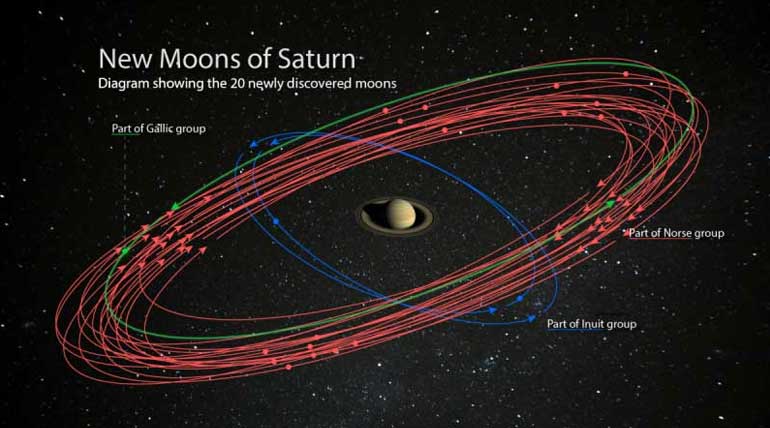Scientists found twenty new moons orbiting Saturn
Gokul Saravanan (Author) Published Date : Oct 08, 2019 11:33 ISTScience
It is Jupiter that has more moons in our solar system until Scientists found twenty new moons revolving Saturn. Now, it is official that Saturn has taken a lead with 82 moons around it. Jupiter has a count of 79, so far.
Help astronomers to name the new moons of our solar system.
It is Jupiter that has more moons in our solar system until Scientists found twenty new moons revolving Saturn. Now, it is official that Saturn has taken a lead with 82 moons around it. Jupiter has a count of 79, so far.
Astronomers have also found these new moons still don’t beat Jupiter’s title of having a “Biggest Moonâ€. Most of the moons that discovered are just 3 miles in diameter while Jupiter’s Ganymede is half the size of the Earth. They have even found a moon that is just a mile wide revolving around the ring planet.
Scientists found twenty new moons and still counting
Astronomers are still counting the moons of Saturn as they found it is hard to spot tinier moons without an advanced telescope from the future. They believe that there may be around 100 more tiny moons revolving the planet, said the discovery team. The team used the Subaru Telescope in Hawaii to spot the new moons.
As per the source from the discovery team, 17 of these new moons are rotating in retrograde; they rotate in the opposite direction of the host planet’s rotation. The remaining three are classified as prograde and one among them has around three years as the orbital period around the planet.
The discovery team from the Carnegie Institution for Science, it has planned for a Moon-naming contest as they did for Jubiter’s moon last year. The same team had discovered twelve new moons around Jupiter last year.
Also Read: EXO MOON DISCOVERY FOR SEARCH OF LIFE
Enthusiasts around the globe can now suggest names for the newly found moons of Saturn on Carnegie Institution’s special twitter account @SaturnLunacy. As per the source, the discovery team has also welcoming artworks related to the discovery on the hashtag #NameSaturnsMoon.
These new moons could be the remnants of Saturn formed over time. Scott Sheppard, the chief of the discovery team said that these moons might have formed from some parent moons around Saturn. Now the team has new hope to understand the origination of the planets of our solar system.
For the enthusiasts who are about to participate in the naming contest, better understand the rules, by the institution, before signing up. The institution is expecting names of mythological giants to suit the Saturnian moons.
So, the names for the seventeen retrograde moons should be Norse mythology giants. The team has placed the two prograde moons in the Inuit group; so the names for them should be from Inuit mythology. The one prograde orbiting in the furthest distance from the planet might need a name form Gallic mythology.




